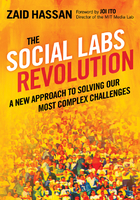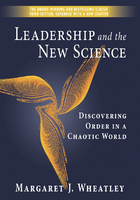Preparation
So you have decided you want to try Open Space–the fact is, it is simple and easy to get started. Nevertheless, some careful preparation is necessary. Not the sort of preparation you may be used to, with months of committee meetings devoted to agenda development and participant selection. But preparation nonetheless.
Appropriateness
The first item to look at is the basic decision of whether to use Open Space Technology or not. In the wrong situation, OST may create more problems than it solves.
Open Space Technology is effective in situations where a diverse group of people must deal with complex and potentially conflicting material in innovative and productive ways. It is particularly powerful when nobody knows the answer, and the ongoing participation of a number of people is required to deal with the questions. Conversely, Open Space Technology will not work, and therefore should not be used, in any situation where the answer is already known, where somebody at a high level thinks he or she knows the answer, or where that somebody is the sort who must know the answer, and therefore must always be in charge–otherwise known as control, control, control.
To take some obvious examples, Open Space Technology would not be the method of choice for installing a new corporate billing system. Presumably the system has been designed, tested, and packaged. At the point of installation, there is little room and even less need for argument, discussion, or change. Simply issue the manuals and allow folks to get on with business.
Conversely, OST works superbly if the issue is the future of the corporation, and the people (all sorts of people including the top brass) are willing to admit that they just do not know the answer, but nevertheless believe that collectively they have a shot at creating a viable solution.
There are, in fact, five Conditions of Use when it comes to OST: 1) There is a real business issue. Open Space is not about “doing a process”; it is about doing a real and needed job. 2) A great deal of complexity. A simple business issue does not require meeting in Open Space or in any other fashion. Just do it! But if this issue is so complex that nobody can quite get their arms around it–that is “meat and potatoes for Open Space. 3) Lots of diversity in terms of people and points of view. 4) Real passion (people care!), and probably also conflict. 5) A decision time of yesterday (genuine urgency).
There is no easy way to quantify these conditions, but experience has shown that if some are missing, or present only at a minimal level, the power and effect of using Open Space will be compromised.
It Always Works
In a curious way, Open Space Technology always seems to work; it just may be that sometimes people are not totally pleased with the results. Not to be mysterious, but in the Open Space environment, people tend to be creative, synergistic (they work together), and self-motivated. If this type of behavior is not desired, it can cause problems.
For example, a Fortune 25 corporation considered OST as a possible component for a new, worldwide orientation program for employees. Their idea was to create a positive and useful first experience by bringing new folks into the fold with the feeling that they had an exciting part to play. Accordingly, they designed a program that would bring together old and new employees to work on issues and opportunities for building a better corporation. One might wonder what the new hires actually had to contribute in such a situation, but the truth of the matter was, a lot. If nothing else, they had all the questions presumably long since answered by those with more tenure. By revisiting the old questions and finding some new ones, the company thought that everybody might collectively build an effective team that looked to the future.
On the appointed day, a test of the approach was initiated. Sixty-five people, two-thirds of whom had been with the company for less than a year, met with their colleagues. From my point of view, the day was everything it was supposed to be. People talked, worked, energized, synergized, and seemed to have fun. When it was all over, I thought it useful to make a quick assessment of how things had gone. So I asked each person to think of a word that described the day for them. Since the program was designed for the newcomers, it seemed appropriate to ask them for their words first. I was not disappointed, for the words included: exciting, energizing, stimulating, liberating, and collegial. Just as I was beginning to feel pleased and proud, I turned to the more senior people and received a nasty shock. Their words: terrible, unsettling, out of control, confusing, worst day I have ever spent.
There was no doubting the intensity of feeling displayed by both groups, and I found myself shaking my head in confusion at the obvious difference. Then one of the very senior members said that he had to agree with his colleagues. The day had been awful, and if not the worst, then certainly on a very short list. But in all fairness, he went on to say, Open Space Technology had done everything exactly as advertised. The problem for him was that he felt out of control, and he did not like that at all. As you might gather, this corporation did not use Open Space Technology in its orientation program, but not because it had failed to work.
Working with the Client If You Are NOT the Sponsor
To this point I have assumed that you (the reader) will be the sponsor and facilitator of the Open Space, and therefore it is your decision as to whether or not to proceed. In the event that you are not the sponsor, there is some essential work to be done with your client. Open Space is a proven, powerful, and effective approach for the resolution of issues and the enhancement of group capacity. It is also a strange new world for many people, particularly those who may have assumed that they are in control or in charge of their organization. I believe that to be a dubious assumption, but that is a different issue. For the moment the issue is a matter of informed consent.
Sponsors need to know what they are getting into, what they can expect, and what will be required of them during and after the event. Even more important, the sponsors need to understand that they will never know exactly how things will turn out in detail and specifics. It is true that there are certain general results which can be promised in Open Space, and we will consider them shortly. It is also true that the final concrete and specific results are always emergent from the group, and rarely in accord with some preexisting plan, except by coincidence.
The emergent quality of the results in Open Space is a source of great power in terms of innovation and buy-in on the part of the participants. The same emergent quality can also be a source of no small amount of anxiety on the part of a manager who is wedded to his or her “plan.” In a worst-case scenario, such a manager or executive may panic when it becomes clear that “The Plan” has been bypassed–to the point that he or she attempts to close down the Open Space before things get totally out of control. The net result will be great unhappiness for all concerned.
My first principle in consulting with a client is never attempt to sell Open Space. Explain what it is, the global experience, how it works, and why you think it might be particularly appropriate for the client's situation–and stop right there! Give the client plenty of open space in which to make his or her own decision. This may sound extreme, but in situations when my client was saying “yes”– but I sensed it was really a “maybe” or possibly “No”–I would suggest that the client think about it some more. In extreme cases I have even said that the client should consider all other possible options for the achievement of the hoped-for results, and when or if he feels that he has run out of options to come back for another conversation. My record in such situations is just about 50/50–but I always felt totally comfortable with the decision, no matter which way it went.
The reason for my caution is simple. In the western world, and in all other parts where it is presumed that central authority and control are the order of the universe, what happens in Open Space is not just surprising, it is counterintuitive and probably wrong. In fact it just could not happen. Everybody knows that inviting a group of people to sit in a circle and speak to their issues of concern without a prior agenda and an army of facilitators to control the conversation is an invitation to disaster. The fact that disaster has been avoided and positive results achieved thousands of times with millions of people in all corners of the world does not change what I find to be a common reaction: “Harrison, this sounds wonderful, but it will never work with this group.” Bottom line: The sponsor must be given space to come to his own conclusion.
It might seem that sponsor anxiety could be curbed by establishing certain limits to the discussion in Open Space. Some of my colleagues call this, negotiating The Givens. Certain areas are designated off-limits, and these limits might be clearly spelled out in the invitation and at the opening of the Open Space. The logic of this approach is clear, but my experience is that it is not all that helpful. Circumscribing the discussion is very likely to limit options which might otherwise provide exactly the path needed for resolution. It is also true that discussion topics placed off limits are usually discussed anyhow–but in secret. This secrecy means that if the prohibited discussion actually achieves positive results, they will be unavailable for the whole group. And by the same token, if the No-No discussion revolves around some painful issue, it will remain to fester. Two examples may make the point.
Prior to an Open Space for a major pharmaceutical in which the Strategic Research Plan for the next five years was to be developed, the director of planning sought agreement for the stipulation that the plan would call for the creation of twenty compounds (a compound is a drug that works, but has yet to receive FDA approval). Seeing that a Given was about ready to be adopted I asked the group, “Suppose you developed twenty-one compounds, would you be unhappy? Or suppose you developed only two, but they were the clear successors to Lipitor and Viagra (the best-selling drugs of that time), would you be disappointed?” The proposed Given was dropped.
In another Open Space, no Givens had been officially proposed or imposed, but the scuttlebutt held that if Issue X were to be raised, heads would definitely roll. Issue X was the first issue proposed, but the discussion was very short. It turned out that Issue X had arisen because of a misunderstanding of a company regulation and after that regulation was clearly and correctly explained (about ten minutes), it was all over. The discussion ended, the issue was resolved, and no heads rolled.
It is a common admonition that we should “Trust the Process.” And in the case of Open Space Technology, that trust would seem to be clearly warranted given the twenty-year experience in thousands of situations. But when it comes to the critical consultation with the sponsor/client, I don't think that admonition is really to the point. For the skeptical manager, executive, or official, the utter simplicity of Open Space renders it suspect, for how could anything so simple do so much? And even if it did work “in general,” could it ever possibly work with this group? I seriously doubt that any amount of argument will turn this corner.
A more relevant admonition would be “Trust the People.” To be sure, neither Open Space, nor any other approach that I can think of, will enable an incompetent group of malcontents to perform like champions. Some people have referred to Open Space as “magical,” but it is not that magical.
That said, I have never encountered a group in an Open Space that had come together of their own volition to serve a common cause, company, or country, that did not possess the necessary passion and internal resources to address (or at least begin to address) the issues at hand. They may well disagree violently on the details and potential paths forward, they may argue every inch of the way, but at the end of the day they have always reached some useful point of resolution. That may not be the end of the story, and perhaps only a useful beginning, but the people did it. That should not be surprising, because collectively they possess resources and knowledge different from, and vastly in excess of, that possessed by any single “leader” or group of external experts. They possess an additional critical element, they care–at least to the point that they have given of their time and person to be there.
In the final analysis, when consulting with the sponsor/client, the critical question is, Do you trust the people? If the answer is yes, then probably you should give the people space to find resolution for the common issue. If the answer is no, then other options need to be considered.
Focus and Intent
Although Open Space Technology is powerful and effective, never use it for the sake of the process alone, only for the potential results. OST is designed to do a job, to work a real business issue, no matter how you define business or issue. So a first act of preparation is to determine in concrete terms what you want to accomplish, best stated in a question.
For example, it might be your intent to plot the future of your organization (which some call strategic planning). Your initial question Corporation? might be: What are the future issues and opportunities for Oxymoron That may seem rather broad, but at least the potential participants would understand that Oxymoron Corporation was on the table and not something else, and further that the whole future was up for consideration, as opposed to simply the compensation scale or new products. As we will discover, Open Space Technology runs on two fundamentals: passion and responsibility. Without passion, nobody is interested. Without responsibility, nothing will get done. Obviously, different people feel passionately about different things (different strokes for different folks). And it is unlikely that anybody will take responsibility for something they do not care about. It is extremely important, therefore, to declare right up front what the focus is.
For Open Space Technology to work, it must focus on a real business issue that is of passionate concern to those who will be involved.
To utilize the example from chapter 1, the 225 people who gathered in Denver felt some real concern about roads on public and tribal lands. The fact that $1.5 billion was at stake raised their interest even higher and was sufficient to draw them to the gathering and keep them engaged until it was over. It is unlikely, however, that the same group of people would assemble for two days to consider the future of the hardware business.
All of this may appear obvious, but it is amazing how often we find ourselves in solemn assembly with little if any idea as to why we are there, or indeed, who called the meeting. Little wonder that nothing gets done and we leave frustrated. Fuzziness of intention may be tolerated in dictatorial organizations, where the word of the boss is sufficient to provide the rationale, but in the world of Open Space, where passion and responsibility are the essential ingredients, the word of the boss doesn't go very far. There is a more important word: volunteer. Voluntary self-selection for people who care is the only useful ticket of admission to an Open Space. Being a volunteer is the prime prerequisite for the full expression of passion and responsibility, and only fools volunteer for something they neither understand nor care about.
Under the heading of comprehension and concern, it has been my experience that few people in working organizations care about such abstractions as team building or empowerment, let alone an “Open Space experience.” They do care about making a profit, providing a service, creating a product, or winning a customer, market share, or even an election. Everything else tends to be viewed as a buzzword, or a “warm fuzzie,” drawn from the special vocabulary of strange people who inhabit training departments and the human resource area. As it happens, I think that team building and empowerment are very important, and some of my best friends work in the human resource area. But the point remains: most of the world couldn't care less, which does not make them bad people, just different.
OST is designed to deal with real business issues–no matter how the nature of the business may be defined. If your business happens to be training or human resources, then you may indeed be passionately concerned about what other people may view as “soft stuff.” So be it. But never inflict your concerns on others and expect them to care as you do. For Open Space Technology to work, it must focus on a real business issue that is of passionate concern to those who will be involved.
Defining the issue or theme for an Open Space is a marvelous point of contact with the client or sponsor and can provide the occasion for very useful conversations. In my experience, clients will often start with a generalized description, such as, “We have a communication problem.” But what does that really mean? Communication of what, to whom, and under what circumstances? And if everything “worked,” what would that look like?
If it turns out that the real issue is that employees are not doing what the boss ordered, doing an Open Space is not likely to fix that; in fact the probability is that the perceived difficulty will only get worse. Furthermore, there is a good chance that the boss is going to hear some things which are unsettling for his or her sense of control and importance. While this could represent a net gain to organizational effectiveness, it is also likely to upset more than a few apple carts. But regardless of the outcome, the conversation will be useful and even essential.
The Group
Who should come, and how do you get them there? The answer is: whoever cares should come, and the fact that they care is sufficient to ensure their attendance. The process of invitation becomes extraordinarily simple. Given the business issue of choice, run it up the flagpole and see who salutes.
I understand that all this sounds neither scientific nor orderly. After all, if we only did what we cared to do, not much would get done. Or would it? Isn't it true that jobs done by people who don't care are not worth much? Is it not also true that people who care greatly accomplish incredible things? And fortunately, there are a lot of different people who care about a lot of different things, which means there is a high likelihood that the majority of things needing to be taken care of will be taken care of–by someone who cares.
The conventional wisdom in many organizations says that until the boss issues the order not much is going to happen. And further, when the order is issued, people in general are not going to like it, because after all, the order requires work. We all know that work is unpleasant or what is retirement for?
Very quickly, the conventional wisdom creates a negative self-fulfilling prophecy that the only way a job gets done is when we don't care enough to do it. And that does not make a great deal of sense. The fact is that the best way to get something done well is to give it to somebody who cares enough to do it. Even in those situations where a number of folks are assigned a task, the usual experience is that the actual work is done by a precious few: those who care to do it. So why not avoid all the frustration, guilt, and anger? Assign work only to those who care to do it.
This revolutionary suggestion apparently would not work in what we take to be a standard organization dominated by the conventional wisdom. However, the suggestion points to the heart and soul of Open Space Technology, and the conventional wisdom may well be wrong. For OST to work, people must do their jobs because (and only because) they care. Put in slightly different terms, voluntary self-selection is the absolute sine qua non for participation in an Open Space event.
At this juncture, you may justifiably be wondering about all those people presumed necessary to the task who, for one reason or another, do not show up. The answer is painfully simple. If those people are truly essential to the task, the task will not get done until they are ready to do it. Alternatively, it may turn out that those folks were not nearly as essential as previously assumed. In my experience, the latter is most often the case. But the principle remains, the right people for an Open Space event are the ones who want to come: voluntary self-selection is the rule.
Voluntary self- selection is the absolute sine qua non for participation in Open Space.
None of this is to suggest, however, that maximum best effort is not required to ensure that all the appropriate people know about the event and are given every opportunity to see that participation is in their best interest. In select cases, a personal invitation can be effective. It is also important that people truly understand the implications of their absence. I have found, for example, that when the issue is the future of the organization (as in strategic planning), people will often find it advantageous to attend lest they not be part of the organizational future. In the final analysis, the issue is quality and not quantity. It is infinitely better to have a small, select group that truly cares than a cast of thousands whose minds and hearts are elsewhere.
How Many?
OST has worked effectively with groups of from five to two thousand members in face-to-face situations. With a little help from the cybersphere, the constraints of time and space can be stretched, making the potential number of participants theoretically infinite. Of course, practical considerations will reduce that number considerably, but there is no need to worry about overcrowding when it comes to the capacity of Open Space to handle large numbers of people. The real question is how many you need to get the job done.
There is no reason to believe that fewer than five would be unworkable, nor that two thousand is a sort of “sound barrier.” I can tell you that two thousand people is a lot of people, and while the energy and excitement is palpable, it scarcely qualifies as an intimate group. At the other end of the numbers scale, there is nothing to suggest that it will not work with fewer than five people. It should be remembered, however, that the total resource available to the group is its membership, which in most cases is more than sufficient. With a group of five, one person represents 20 percent of the total resource. If that person is feeling a little down or out of sorts, the impact on the group can be immense. On the other hand, if the same person is feeling a little down in a group of one hundred, the effect of the 1 percent diminution would probably be minimal.
The Invitation
At some point it is usual to issue an invitation. For small groups, it may be verbal, but more often than not something in writing is appropriate. A natural temptation (which must be resisted) is to try to explain everything that will happen during the event, including how and why it will work. After all, we are used to sending out a full agenda in advance with a complete rationalization. Open Space makes that unnecessary. The group will prepare the agenda upon arrival. Thus, providing the agenda is not only unnecessary, it is impossible. So what do you say in the invitation? As little as possible.
The objective is to stimulate the imagination of potential guests to the point that they perceive the pertinence and attractiveness of the issue. In these days of information overload, when it is presumed that more is better, a parsimonious approach may seem strange. Remember, however, that when you give out all possible information, there is no room for imagination. I am not suggesting obfuscation or deceit–just that you say only as much as you need to and allow the creative concern of those who attend to do the rest.
A useful model might be the first paragraph of a really good story. If you tell the whole tale at the outset, nobody would bother reading on. On the other hand, if you say nothing, or little that makes any sense, the reader will not be hooked. The art lies in saying just enough to catch attention, while leaving sufficient open space for the imagination to run wild. Words such as provocative, evocativeimaginative, or open-ended set the tone, and questions should heavily outweigh statements, for questions create space in which the imagination can grow.
There is, of course, some practical information to be included in the invitation, such as location, time, and logistics. But above everything else, keep it short, simple, and to the point. Simplicity is truly a virtue, and it is useful in all areas related to Open Space, beginning with the invitation. In the process of developing OST, I practiced what may seem a rather strange discipline, which I call “less is more.” Each time I had an opportunity to run an Open Space event, I attempted to identify one more thing not to do. Over the years, I think I have pared it down to the bare-bones essentials.
And what do you say about the process itself? Again, as little as possible. Truthfully, even if you were to send the participants this whole book (God forbid), a substantial number still would not understand, and fewer would believe. But that is not a fatal flaw, for there is another truth. Most people don't really care about the process of a meeting; they care about the issues and the results. So when it comes to explaining Open Space, don't. Simply say that although it may be new to this group, it has been used all over the world with predictable results. By the end of the gathering, the following will have occurred, and that is a promise!
Every issue of concern to anybody will have been raised, if they took responsibility for doing that.
All issues will have received full discussion, to the extent desired.
A full report of issues and discussions will be in the hands of all participants.
Priorities will be set and action plans will be made. (The last two typically only occur in two- and three-day meetings with computer support.)
Every invitation is unique, and it should be. The invitation should appeal to that unique group of people who might care about the issue at hand. By definition, that will exclude a whole mess of other people who couldn't care less. So when putting the invitation together, it must be in the special language of the target group. This is obviously true of the major languages (English, French, Chinese, and so on) but equally true of the special organizational languages. People from IBM communicate in a way that will immediately identify them as coming from IBM–never to be confused with Google. And the same may said of bankers, lawyers, peace workers, community activists. Language which reaches any particular group will almost by definition be a turn-off for most others.
Creating the invitation is yet another opportunity for good conversation with the client or sponsor. If you are the consultant, you can certainly help with the process, but the client must do the work. This may sound like a cop-out, but the advantages are clear. In the first place it will be another chance for a real discussion of why the client or sponsor is doing all this, and if it turns out that the client/sponsor doesn't know and doesn't really care, now would be a very good time to terminate the whole affair, or at least put it on hold. And when it comes to the special language, only the people involved will know the key power words to use.
It is sometimes suggested that providing sample invitations from other groups could be helpful. I have never found that to be the case because if the sample invitations are really good they are so specific to the intended groups as to be of little interest, let alone comprehensible, to any other group. One of the best invitations I ever saw in terms of its motivational power simply invited all those who cared about, “Fixing Arizona.” For the casual reader this would make little sense, but to the intended audience (a phone company in the state of Arizona) it was crystal clear. They all knew that their system was broken and in desperate need of repair.
If samples are less than helpful, a basic format can assist. I suggest four simple sections all presented in a page, or less. More than a page, and it probably won't get read.
The Theme (issue): Stated in ten words or less–preferably much less (see above “Fixing Arizona”)
Background/Rational: This should include highlights and most especially intriguing questions. But by no means should this be a full documentation of present status and desired future. If further documentation is URGENTLY required, include it in the package, but not the invitation.
Logistics (Where, When, and How): Keep it simple–the place of meeting, time of start and ending, but obviously you can't include the agenda, because that hasn't happened yet. However, to mollify those who absolutely require an agenda you might indicate when meals will take place and the schedule of sessions. You might also want to indicate that this will be an Open Space but avoid a detailed explanation. It will only get you in trouble. If you absolutely have to say something try: “Open Space Technology is a highly participatory process which has been successfully employed in multiple situations all over the world.”
The Promises (see above): As I have said previously, most people really don't care about the process. They care about results and need to have some assurance that their time will be well spent. The promises will help in that regard.
Time and Space
Open Space Technology happens in time and space, and although the requirements are minimal, they are important. Even more important is the understanding that there is no perfect, ideal, or generically optimal time and space for Open Space. Almost anything will work (with some important exceptions). The real question is the appropriateness of both the time and the space to the people and to the task.
How much time do you need for Open Space Technology? The answer is, one to three days depending on your hoped-for outcomes and the volatility and complexity of the situation. If the issue is relatively simple and you are basically looking for a good discussion of the matter, one day will certainly do it. An example of this might be an assessment and possible redirection of an ongoing project or program in which everything is basically going well. Curiously enough, the actual number of people involved in the gathering has no particular effect on the amount of time required. An extreme example of this was a gathering of 2,108 German psychiatrists who wanted to identify new areas for practice and collaboration at the conclusion of a four day annual meeting. In one day they created some 236 groups to deal with the emergent subjects, and from all reports felt that their time was well spent. Since I cannot understand German, I must take their word for it.
On the other hand if the occasion for the Open Space is a highly complex and/or conflicted situation two days, and preferably two and a half days, is essential. Examples from my own experience would include a gathering of five hundred individuals from a major voluntary organization which had reached such a level of organizational dysfunction that pursuit of its mission was being compromised by a series of painful turf battles.
In another situation, Boeing Aircraft found it necessary to redesign the way it manufactured doors for aircraft, a process that involved five countries and twenty-five thousand people. Needless to say, we did not have all twenty-five thousand people, but there were more than four hundred people from multiple disciplines including senior management, engineers, and “door hangers”–the people who actually install the doors. And they all cared passionately about doors.
On the short end of the scale, less than one full day is usually frustrating. It seems that no sooner has the process started than it is time to go home. Some colleagues, however, who utilize OST in school systems, have managed to fit the approach into a fifty-minute school hour. Shorter time frames are therefore possible, but in general I would suggest taking at least one full day.
Setting aside one or two days is often seen as burdensome or impossible for busy people. However, it is important to consider the time to be spent in relation to the need to be addressed. Two or even three days is a serious chunk of time to be taken out of a frantic schedule; however, if the issue or opportunity is critical, the cost of that time will appear minimal when compared to the potential benefit. In the example above, the five hundred participants from the major nonprofit organization were all exceptionally busy people. But in the two and one half days they spent together they went to the very depths of their divisive issues and created the pathway which led to the total renewal and reorganization of their enterprise. I believe they all found the time to have been well spent, and most of the people I spoke to were amazed how much they accomplished in what, retrospectively, seemed to be a very short time frame.
When faced with a situation like the one described above, I simply would not consider anything less than two full days. In part this is a matter of allowing sufficient time for the issues to emerge and be addressed. During the first day, most of the issues will be raised, at least by title, but with a second day there is the opportunity to go deeper. And there is an added piece of the mix which is equally critical– the night in between. Although it may be true that formal sessions will run from 9 a.m. to 5 p.m., the conversation never stops, even when people are asleep.
One might think that useful things are happening only when people are talking, but I suspect that the richest part of the whole affair occurs when mouths are closed and the old subconscious takes over. Insoluble sticking points often come unstuck with a good night's sleep. And even if the answer does not appear with the rising of the sun, renewed energy combined with a changed perspective will often be tremendously productive. Given a second day, new issues can be raised, and previous issues can be considered at a deeper level.
At this point, you might think that if two days are good, three might be better. However, experience to date tells me that by the end of the second day fatigue is definitely a factor. People will report that working in Open Space is experienced as a relatively easy flowing state, certainly when compared to the traditional formats of being stuck in endless sessions. However, the energy consumed is enormous, and when the second day concludes, most tanks are registering empty.
A third half day can be useful–but for some rather different purposes. If the intention is to move from discussion to action, the morning of a third day will provide sufficient time for convergence, prioritization, and action planning. I will describe the details of convergence and action planning in chapter 8.
It should be noted however, that not all gatherings have any particular need to move to action. Open Space is often used for collegial gatherings where the discussion itself is the final objective. For example the 2,108 German psychiatrists had neither the need nor desire to create a plan of action for their group. For them a sharing of experience was sufficient.
OST in Combination
It is sometimes necessary to use OST in combination with other approaches to meetings. There is nothing wrong with this so long as certain principles are kept in mind. The fundamental one is: Never interrupt Open Space with something else. When you are doing Open Space, do it. When it is over, it is over.
This means that if you have a series of speakers you want the group to hear or other programmatic activities you want everybody to be a part of, do it before Open Space. The reason is simple and relates to the essential precondition of voluntary self-selection, without which Open Space Technology will not work. There will be no problem, however, if the command performance takes place before the Open Space.
Theoretically, such mandated group events might also follow the Open Space, although experience has shown that the results are less than optimal. The level of synergy and creativity is typically so high in Open Space that it is difficult to sit still and listen to a speaker at the conclusion, even a very exciting speaker.
Space
Open Space Technology requires one main room that is large enough to allow all the participants to sit in a circle, or concentric circles, without crowding. Breakout areas are also required, and we will deal with that issue shortly. When estimating the necessary size of the main room, it usually works to divide the rated capacity by two. Thus if the room is rated for two hundred people theater-style, it will comfortably handle one hundred people in Open Space.
One wall of this room must be free and unobstructed by doors, curtains, windows, or pictures. This wall will become the community bulletin board, where people will be taping up notices indicating their areas of interest. Should masking tape not adhere to the wall, all will be lost. If the hotel management throws a fit at the prospect of material taped to the wall, get a new management, hotel, or both. Just to make sure, I strongly advise doing the “tape test” when the venue is first selected. Apply a piece of the tape to be used to the specific wall and determine that the two will stick together, not just momentarily, but over time and with strain.
It is also useful, but not imperative, to find a room that will be large enough to accommodate the coffee break setup and the computers (if they are going to be used). Placing both of these elements in the large meeting room will ensure a constant passage of people in and out, which is useful for building the group's sense of flow and energy. Security concerns may dictate placing the computers in a separate room, but stealing a full-size personal computer in a busy environment is not all that easy, nor is it something I have ever experienced. Laptops are something else, which is one of the reasons I prefer not to use them.
The point of placing the computers in the main room is to make the report generation process an integral piece of the total fabric. It is not something done by strange people called secretaries. With the computers in the public place, discussions begun in the sessions, halls, and elsewhere continue and grow richer right up to the moment they are captured electronically.
Breakout spaces are required after the process gets going. Note that I said breakout spaces, and not necessarily rooms. Some people require four walls, a table, chairs, and a chalkboard (windows optional) before they feel well situated to do anything that looks like work or discussion. For such people, breakout rooms are essential. Other people experience that sort of environment as claustrophobic and greatly appreciate the great outdoors directly, or at the very least mediated through a window. The point is that a variety of meeting spaces is in order.
A great deal of time and effort have been devoted to the understanding of differences in learning styles and pacing (speeds), and there is no doubt that each one of us has our own peculiar requirements that must be met if we are to achieve our optimum performance. Less attention has been given to what might be called learning spacing. Each one of us has a set of physical conditions in which we perform best and learn most comfortably. These conditions change with time, subject, and temperament. We all want an environment conducive to our learning, but that environment can be very different for different people, or can even be different for the same people at different times.
Effective circumstances for an Open Space event not only include a sufficient number of formal breakout rooms for those who feel the need for such things, but also a healthy array of other kinds of spaces–big ones, small ones, by water, in the woods, adjacent to the bar, quiet, noisy, open, closed. I am convinced that the depth and rapidity of learning are directly proportional to the variety of available spaces.
When it comes to designated breakout spaces, a workable rule of thumb is five per one hundred participants. This presumes that there are some additional public spaces in the facility, such as the lobby, gardens, hallways, and of course, the more the better. It also presumes that some people will find it comfortable and convenient to meet in the large main room.
Of course, it is also possible to use one large room for everything. In which case the breakout spaces are designated with signs on the wall and/or on stands. In one particularly creative gathering (for the 2,108 German psychiatrists), which took place in two large circus tents, the breakout areas were indicated by helium filled balloons anchored by sandbags. The scene was completed with the necessary signs (Four Principles and One Law) attached to thin sticks and floating around the large space supported by bunches of balloons. A magical sight indeed!
Other Considerations–Like When Do We Eat?
Humankind does not live by discussions alone. Sooner or later, snacks or meals are not only nice but necessary for reasons of physical survival, in addition to providing an important occasion for the ongoing process of dialogue. Unfortunately, most conference coffee breaks and meals are arranged for the convenience of the management, with little regard for the feelings and needs of the participants. When it comes to eating, voluntary self-selection applies just as it does in all other areas of the Open Space experience. To the extent possible, people should be able to refresh themselves when they need and want to, congruent with their other activities. If the discussion has suddenly heated up, no meal bell should be allowed to interrupt. By the same token, when there is a break in the action it is nice to be able to take a pause that refreshes.
Pushed to extremes, this philosophy could well create revolt in the kitchen, which would be a disaster in itself. There are, however, a number of ways to avoid this. For example, all meals can be served as buffets over a several-hour period, allowing people to come and go as they please. For coffee breaks, try replacing the fifteen-minute mad dash, which nobody observes anyhow, with a more leisurely approach. The world will not come to an end if the beverages and snacks are left out for an hour or longer. Of course, things do get cold, or warm, over time, but that problem can be solved by serving foods that do well at room temperature over extended periods of time, such as fresh fruit.
Another strategy is to hold the meeting in a place with easy access to a number of restaurants, all of which have different hours and cuisines. In this way the fate of the total population is not solely in the hands of one kitchen staff. With virtually no effort, it is possible to ensure that there is never a time when something good to eat or drink is not available. This may be somewhat difficult on the waistline, but it has definite advantages for a methodology that took its original inspiration from the coffee break.
The easy availability of a variety of food and drink over time becomes especially important when multiple cultures are present at a single conference. For example, Americans typically have lunch at noon, with the program resuming an hour later. Dinner appears at six or, at the very latest, seven o'clock. Most of the rest of the world considers this schedule madness and heresy. Siestas are interrupted, and the possibility of the late evening dinner precluded. Result? Unhappy people!
The solution is simple. Make it possible for everybody to eat and sleep when they want to. Open Space permits such flexibility while still allowing the task to get done. There is no reason why participants should become prisoners of the kitchen staff. Should the participants also have traveled some distance to attend, the variety of time zones will compound differences of cultures. It is difficult to participate effectively when the belly is unhappy and growling.
Supplies
The basic supplies for Open Space are simple but essential. The actual quantities will, of course, vary with group size, and in creating the following list I had in mind a group of about one hundred. In chapter 5, I will describe in detail how the following items are used, but under the heading of preparation, the following materials need to be secured:
Masking Tape: Five rolls (one-half inch)
Ink Markers: Dark primary colors, preferably washable, about fifty per one hundred participants
Flip Charts: One chart with stand per breakout room, five extra pads
Post-its: Three-by-five-inch size, two packages of one hundred per package
These quantities are not precise, and if your group is very artistic, loquacious, or wasteful, you may need more.
If your group is going to do things like create a set of proceedings, set priorities, and prepare action plans, you may require a number of computers (see chapter 3). But bare-bones Open Space will function just fine with the minimal supplies described above. It is even possible to do proceedings, priorities, and action plans without computers.
A final necessity is a microphone for groups of seventy-five and above, unless the acoustics are superb. For the process to work well, people have to hear each other, and soft voices tend to drown in the carpet. A wireless mike is best, for long cords present an unacceptable hazard, particularly when the group starts to move about, which it will. If a wireless mike is unavailable, however, a corded mike will do, but with the following considerations. First, make sure that the cord is long enough to reach any point in the circle. With large groups, this may mean as much as two hundred feet of cord, and that is a lot of wire. Second, be very careful when the group starts to move, or somebody will trip, be garroted, or worse.
Consultation with the Facility Management
The facility management of your conference is a most important part of your team. If they have never supported an Open Space event, it is essential that you spend as much time as necessary to make them feel comfortable and part of the action. They will find that OST is much easier to host, but because it is different, it may seem a little strange.
I find it useful to talk about the total concept, how it got started, and what the experience has been, in addition to the standard details that are usually covered in preconference meetings. They need to know, for example, not only that you need meals on a flexible schedule and refreshments available at all times, but why this is important. As professionals whose business it is to support various sorts of gatherings, I think you will find that their interest will be strong. If you are fortunate enough to be the only guests in the facility, a condition I strongly recommend, there will be no problems with other guests. However, if you are sharing a facility, it is possible that the apparently random coming and going of the Open Space group may be a little disconcerting to others whose approach to meetings is in the more traditional mode. All these problems can be avoided if it is clear in advance where your people should not go. If you find there are too many prohibitions, it may be best to seek an alternative facility.
Under ideal circumstances, the facility staff will feel free to join in the festivities as appropriate. Obviously, if proprietary information or other sensitive matter is being discussed, outsiders will not be useful. But where and when that is not the case, a welcome mat for your hosts is always a plus.
Checklist for Open Space
Appropriateness
Should we even take this trip? Is OST right for our purposes? Is the client/sponsor really ready to “Trust the People?”
Theme
Is it clear, focused, but with sufficient room to let the imagination grow?
Invitation
Is there sufficient information to ensure that our guests arrive at the right place, at the right time, and ready to go to work? Does our description of the task evoke participation without prescribing the detailed outcome?
Time
Have we allotted sufficient time for what we want to do? One day for a good discussion, two days for a deeper discussion, and a third half day for action planning.
Main Space
Is our main meeting room large enough so that all our participants may sit comfortably in a circle, or two or three concentric circles, with room to spare?
The Wall
Do we have a relatively unobstructed wall in our main meeting room, long enough so that all our participants can stand in front of it and not be more than two or three persons deep? Will masking tape stick to the wall? Will the management object if the tape does stick? Did we do the “tape test”?
Other Spaces
Do we have sufficient breakout rooms for those who like a formal setting (five rooms per one hundred participants)? Will other people with other tastes find something to their liking? Have we advised the management that our participants are likely to be working all over the facility? Are there any areas where our people should not go?
Food and Drink
Have we made arrangements for the maximum possible flexibility for meals and snacks? Will plenty of variety be available most of the time?
Supplies and Equipment
Do we have the necessary supplies ready to go?
Masking Tape–Two rolls (one-half inch) per one hundred
Ink Markers–Dark primary colors, preferably washable, about fifty per one hundred participants
Flip Charts–One chart with stand per breakout room, five extra pads
Post-its–Three-by-five-inch size, two packages of one hundred per package
Microphone–Cordless if possible, or with sufficient cord to reach all points of the circle
Consultation with the Management
Have we spent some good, quality time with the facility management? They need to know that an Open Space event is probably unlike anything they have experienced before. Because of the simplicity of the arrangements and the responsibility of the participants, management's job is always a lot easier and may actually be quite fun. If you feel free to do so, invite the staff to participate at whatever level seems appropriate. After all, they are an important part of the team.
Have a great
time! Remember:
if it isn't fun, it isn't
working.















